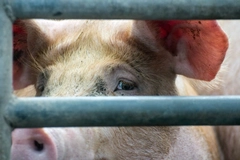
- Industry news
Industry news
- Category news
Category news
- Reports
- Key trends
- Multimedia
- Journal
- Events
- Suppliers
- Home
- Industry news
Industry news
- Category news
Category news
- Reports
- Key trends
- Multimedia
- Events
- Suppliers
Sterile Chocolate Pieces for Yoghurt and Other Dairy Products

HERZA Schokolade is the first manufacturer to develop a method for making sterile chocolate pieces that can be mixed with yoghurt during the production process.

Jul 22 2010 --- Little chocolate pieces add a distinctive taste to muesli, ice cream, bakery products, yoghurt and desserts. But the combination of milk products and chocolate has so far confronted dairies with a major challenge. The reason is that chocolate paste made by conventional methods is not sterile, which means that yoghurt quickly deteriorates.
The use of chocolate pieces in dairy products like yoghurt, quark and desserts presents two major problems. On the one hand these product groups have a high moisture content of over 80 percent; on the other, they must have a shelf-life of at least four weeks. Although chocolate made by the conventional method has a fairly low bacterial count, that is not enough for dairy products. In yoghurt, adhering bacteria find an ideal breeding ground and proliferate rapidly. The product goes bad within a short time and can no longer be sold. A further problem is that the sugar crystals dissolve in the moist environment. The chocolate pieces lose their stability and consistency.
In order to guarantee the proper shelf-life of the end products, the chocolate has to be sterile. That means initially degerming the cocoa beans or cocoa mass and then sterilizing the chocolate paste made from them. Then the chocolate pieces are produced and packed under sterile conditions. That sounds quite simple in theory, but in practice it demands both technical and product-specific know-how. Torsten Wywiol, managing director of HERZA Schokolade: “The constituents of the cocoa are very sensitive. Excessively high temperatures and incorrect cleaning, roasting, grinding or conching impair the quality of the finished chocolate pieces. All that has to be taken into account when you are developing new sterilization techniques.”
Sterilization is one thing; the stability of the chocolate pieces is another. There are two ways to ensure that chocolate keeps its shape and consistency in yoghurt or fruit preparations. Torsten Wywiol explains: “One way is to cut down the sugar content of the chocolate so that the individual sugar crystals are covered with a thicker layer of fat as a protection against water. The other possibility is to coat the sugar crystals with emulsifiers or other barrier layers in order to prevent any interaction between sugar and water up to the end of the minimum shelf-life. Our aim is to develop a technical process and suitable plant for producing sterile chocolate in different shapes and sizes which will help to enhance the sensory quality of the end products.” During the next two years HERZA plans to invest some 1.1 million EUR in this research project. The state of Schleswig-Holstein is supporting the project to the tune of more than 270,000 EUR.
Yoghurt has very good market potential in many countries, and yoghurt products with chocolate are steadily gaining significance. With sterile chocolate pieces, dairies can make good financial use of these possibilities since no special plant is needed for processing them. The chocolate pieces are delivered as pourable material in suitable packaging systems so that they can be added easily to the dairy product or fruit preparation. The factory only has to prevent any contamination via the ambient air, and for dairies that is one of the hygiene requirements in any case.










